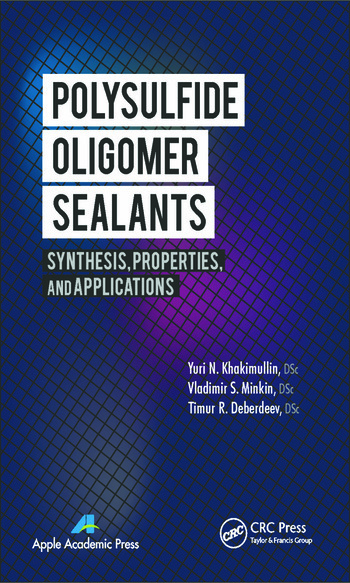What to Consider Before Choosing Adhesives and Sealants

Deciding which paints and adhesives to use for a project plays a major role in its eventual success. It’s not always possible to know which factors will most influence your choices, but here are some that are likely to affect your efforts moving forward.
1. Supply Chain Availability
How easily you can obtain certain adhesives and sealants may influence your decision about using them. That’s especially true when you’re working on an urgent project, making it infeasible to potentially wait weeks or longer for the necessary coatings to arrive.
Research indicates that global supply chain constraints affecting raw materials make it harder to get some sealants and adhesives. The issues affect other products, too, such as foams.
Plus, even if it’s possible to order the products you want, the prices may be higher than expected. For example, the market study cited above showed that MDI isocyanates prices rose 42%, which affected the associated costs of hot-melt and solvent-based adhesives.
These changes make it wise to consider adjusting your budget or seeing how much the client is willing to pay. Beyond that, try to have accurate expectations about how it may take longer for the products to arrive than you initially planned.
2. Special Project Requirements
Selecting the most appropriate sealants and adhesives also means studying all aspects of the project at hand, and determining which products best meet its short- and long-term needs.
For example, a team in North Dakota was recently tasked with restoring one of the state’s oldest buildings, a 153-year-old log cabin. Part of the job involved using epoxy to treat wood deterioration. When the material breakdown was too extensive, the workers replaced the problematic logs with pieces of wood from other sites, including a former armory in Minnesota.
Sealant was an important part of the procedures, too. More specifically, when the team replaced the old logs with newer ones, that action caused the surrounding chinking to fall out from around the wood. Chinking is a type of sealant that closes the joints between logs.
They also chose a sealant that acted as a waterproof coating. That decision should prolong the time before further renovations become necessary.
This case study illustrates some of the specifics you may need to think about before pushing ahead with a project, especially if preserving a historic structure is part of the aim. Failing to consider such things does not always mean that efforts fail, but it could make everything take longer by causing preventable complications.
3. VOC Regulations
Adhesives, paints and similar coatings often contain volatile organic compounds (VOCs) that adversely affect people and the environment. Government authorities have taken steps to control their usage, but the matter gets more complicated when you realize the specifics vary by country. Additionally, several regulatory agencies may set the parameters for VOC usage and levels.
For example, people in the United States must satisfy federal regulations, and there may be applicable state-level restrictions. The Environmental Protection Agency (EPA) and the Occupational Safety and Health Administration (OSHA) are a couple of nation’s governing bodies overseeing VOCs. However, the EPA handles aspects like manufacturer labeling, while OSHA sets exposure limits for workers using products with VOCs.
Differences also arise in how countries define VOCs. In both Canada and Europe, regulators use a substance's boiling point to determine whether to categorize it as a VOC. However, in China, VOC designations are more tied to certain activities, such as applying coatings to furniture, cooking products in oils that generate fumes and polluting the air by burning fuels. The United States has also deemed some products exempt from VOC rules because of their lower reactivity.
These significant differences across countries highlight the importance of verifying the specifics before purchasing adhesives and sealants. Alternatively, you can look for low and no-VOC options. They’re increasingly easy to find, especially because a growing number of people prefer using eco-friendly products.
4. Opportunities for Automation
Whether you can easily automate the application of the chosen adhesives and sealants is another aspect worth considering. Fortunately, the possibilities for doing that are more accessible now than they have been in the past.
The increased availability of cobots (collaborative robots) is a significant reason for that reality. Analysts predict that cobots will account for 30% of all robot sales by 2027. You can also order many models with specialized attachments that allow the robot to carry out certain tasks, including applying glue.
Take the real-life example of Tool Gauge, which manufactures metal and plastic parts and assemblies for the aerospace industry. Its leaders invested in two cobots to raise efficiency and competitiveness. One of the machines used in the injection molding department picks up plastic end caps and dispenses glue on their complex surfaces. This task formerly required four people to complete 200 caps per day. Now, one operator supervises the cobot in finishing twice that number daily.
People are also exploring ways to automate sealant applications. One example is the RoboDeck, which creator Gal Frenkel describes as “Roomba, but for resealing your deck.” He discussed the various challenges of creating the machine, including building mapping technology to ensure the bot would not move through a treated area and ruin the just-applied coating. The product’s development required achieving consistent results despite the differences in each deck, too.
The team behind the robot also created a specialized sealant that gives better coverage with each spray compared to options currently on the market. For now, company representatives plan to market to homeowners on a subscription basis that covers both the machine and supplies. However, it’s worthwhile for professionals to keep up with how this product and similar ones might accelerate their workflows, too.
5. Environmental Characteristics
Selecting adhesives and sealants becomes more straightforward when you think about the environment they must withstand after application. For example, polysulfide sealants resist ultraviolet radiation and even suit underwater applications. They also last up to 20 years when properly applied.
Polyurethane is among the most durable wood glues since it’s waterproof. You can also use it indoors or out. In contrast, if you need adhesives that work well with natural stones, try silicone-based products or epoxy glue. Masonry adhesive is another option, but be sure the manufacturers intend the type you buy for outdoor use.
If your product involves applying a coating to a boat, specialized products exist in the marine market that possess both sealant and adhesive capabilities. Polyurethane and silicone are some of the most popular sealants for surfaces experiencing regular saltwater exposure. Of those two, polyurethane bonds better to wood. Silicone offers more robust weatherproofing on non-wooden surfaces but is more expensive than polyurethane.
Thoughtfully Selecting Adhesives and Sealants Is a Good Starting Point
This overview shows how critical it is to account for all relevant factors before finalizing the types of adhesives and sealants you use. Doing that could help you save money, have continually content clients and match the coating to the substrate and the future usage of the product in question.
These are only some of the top considerations for your next adhesive or sealant-related endeavor. However, they’ll help you avoid many pitfalls and could boost your productivity in the process.
Looking for a reprint of this article?
From high-res PDFs to custom plaques, order your copy today!








